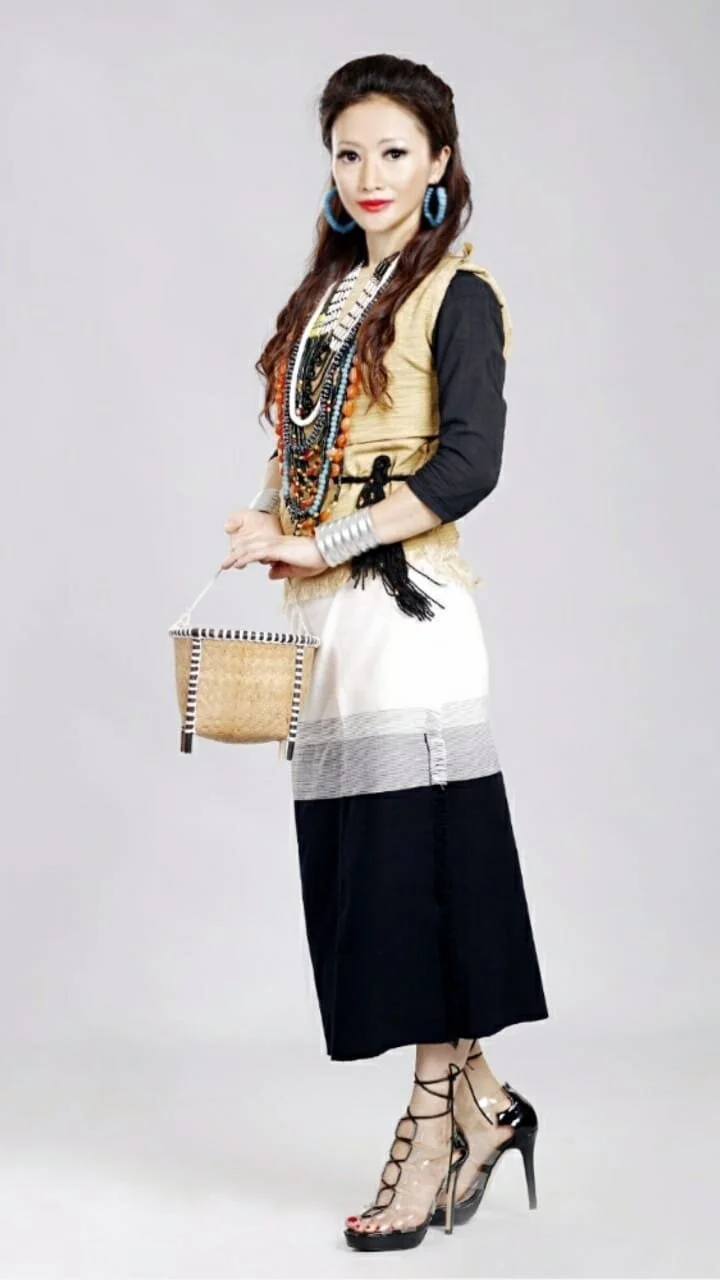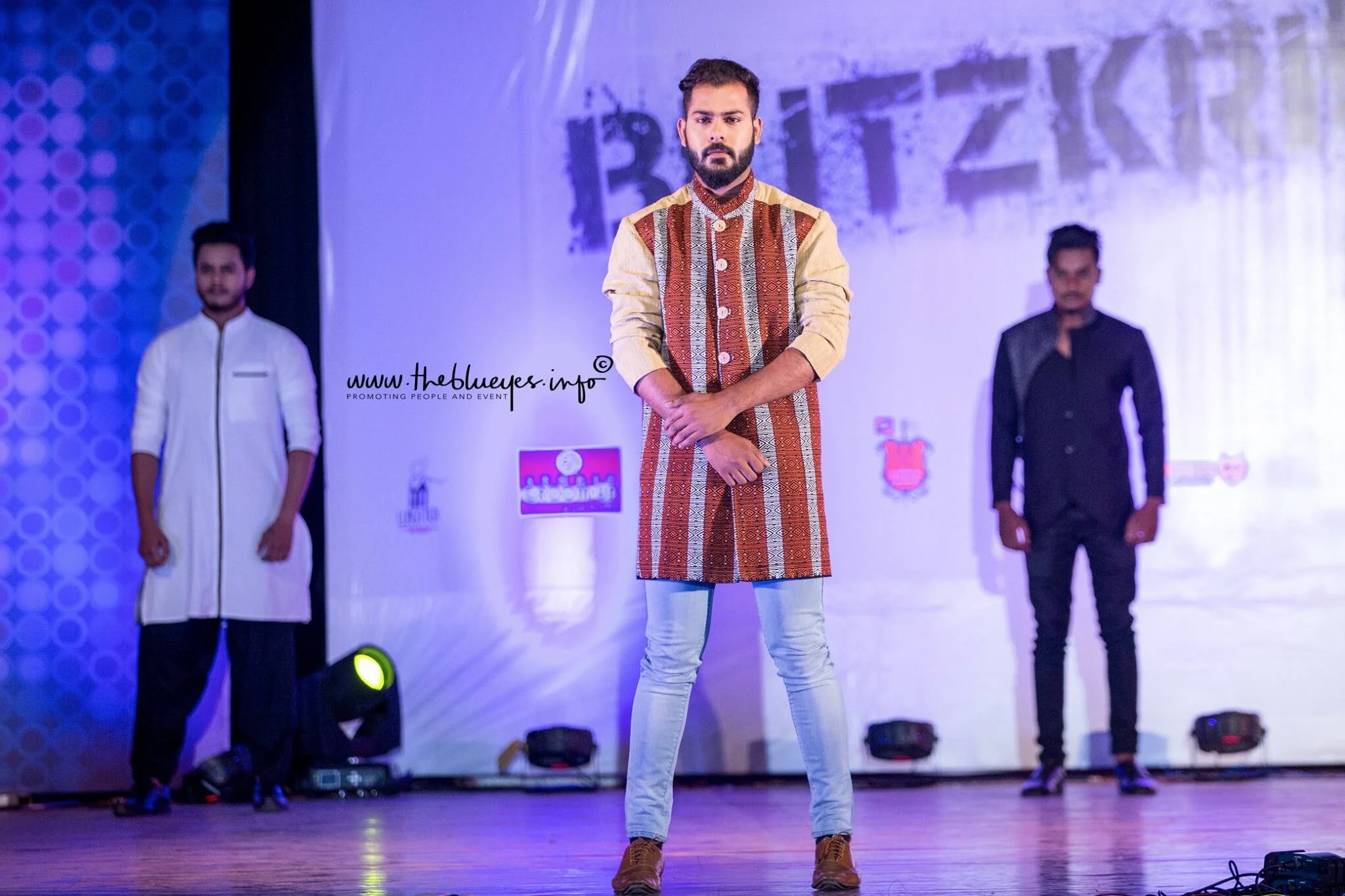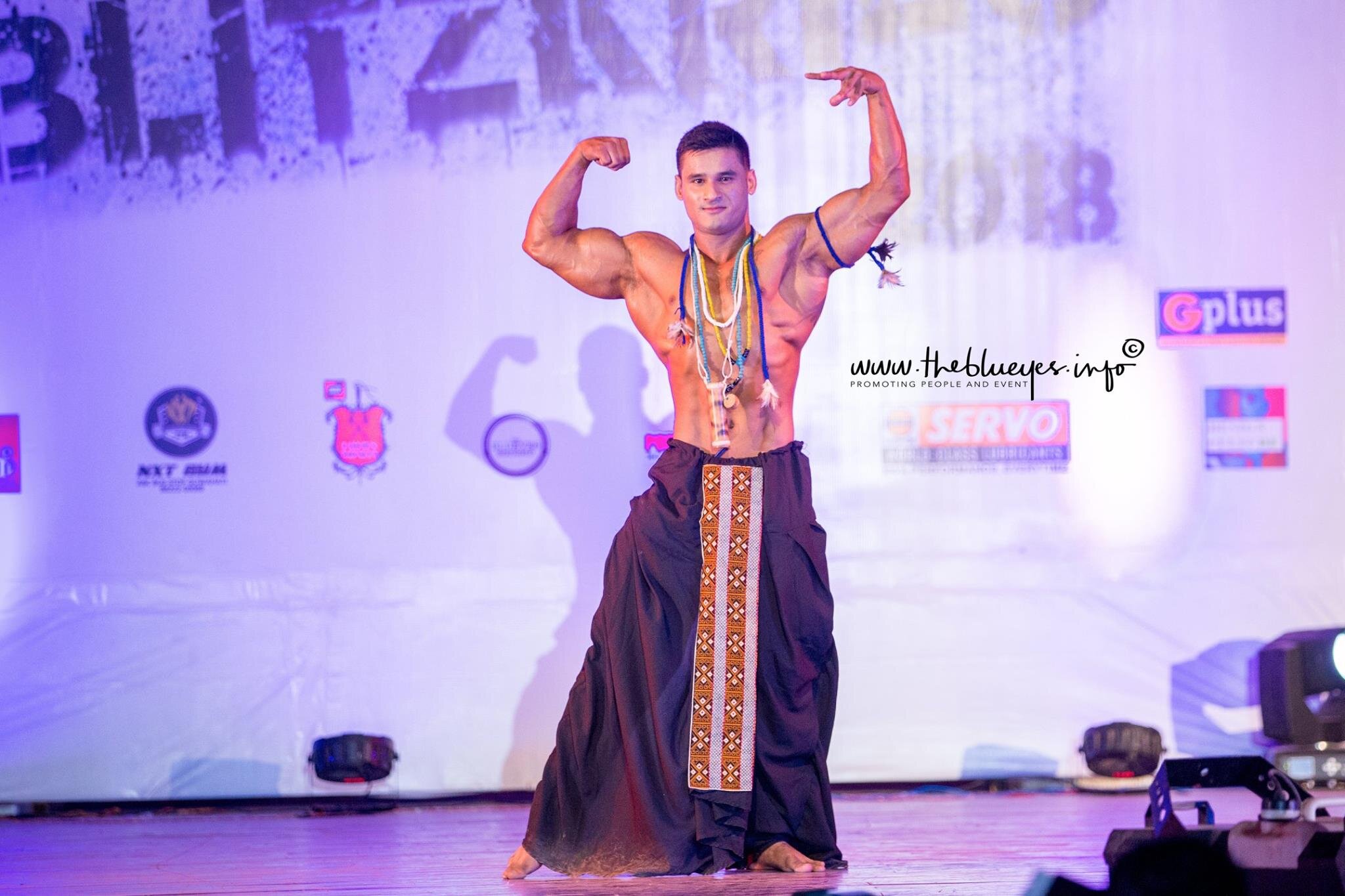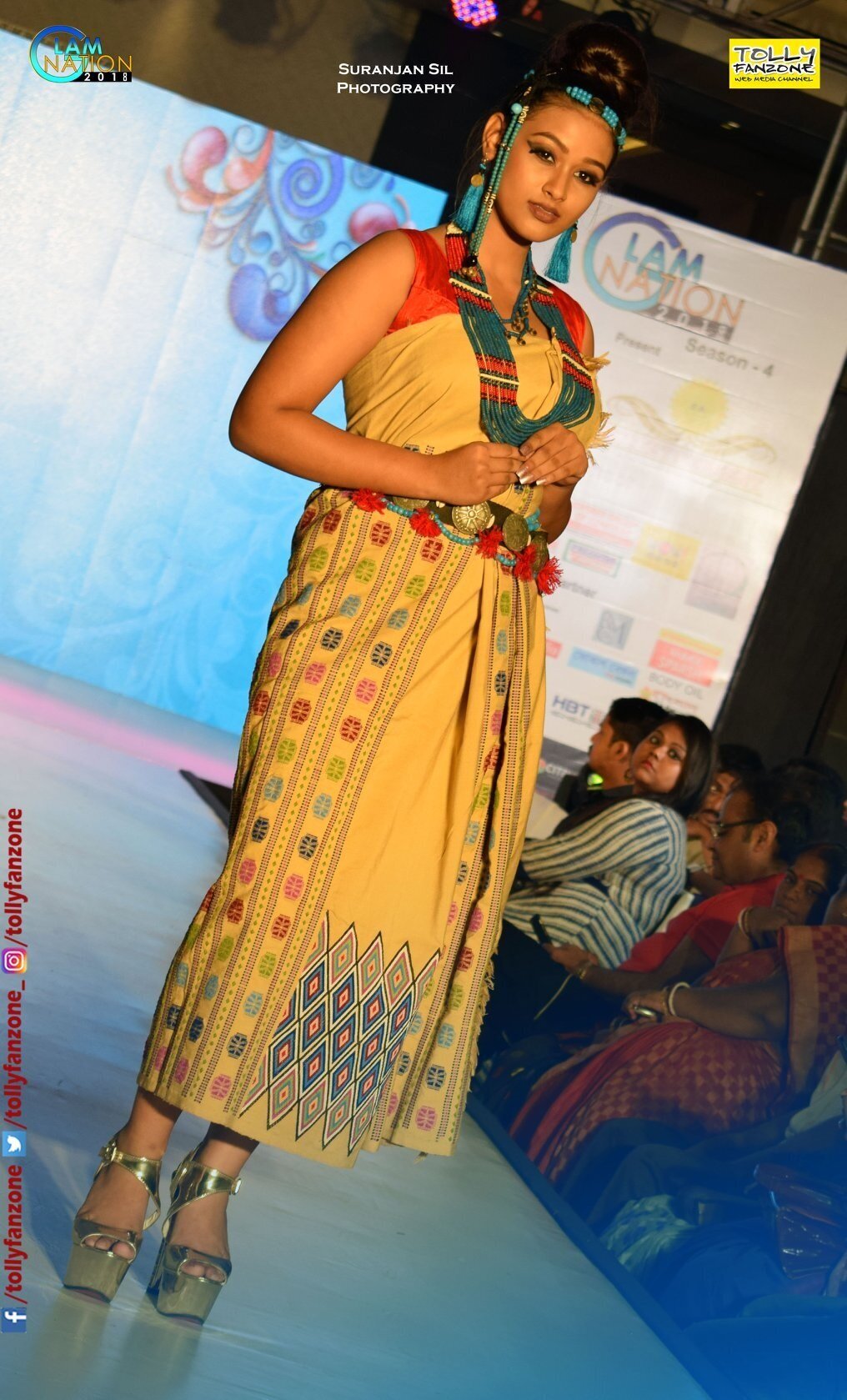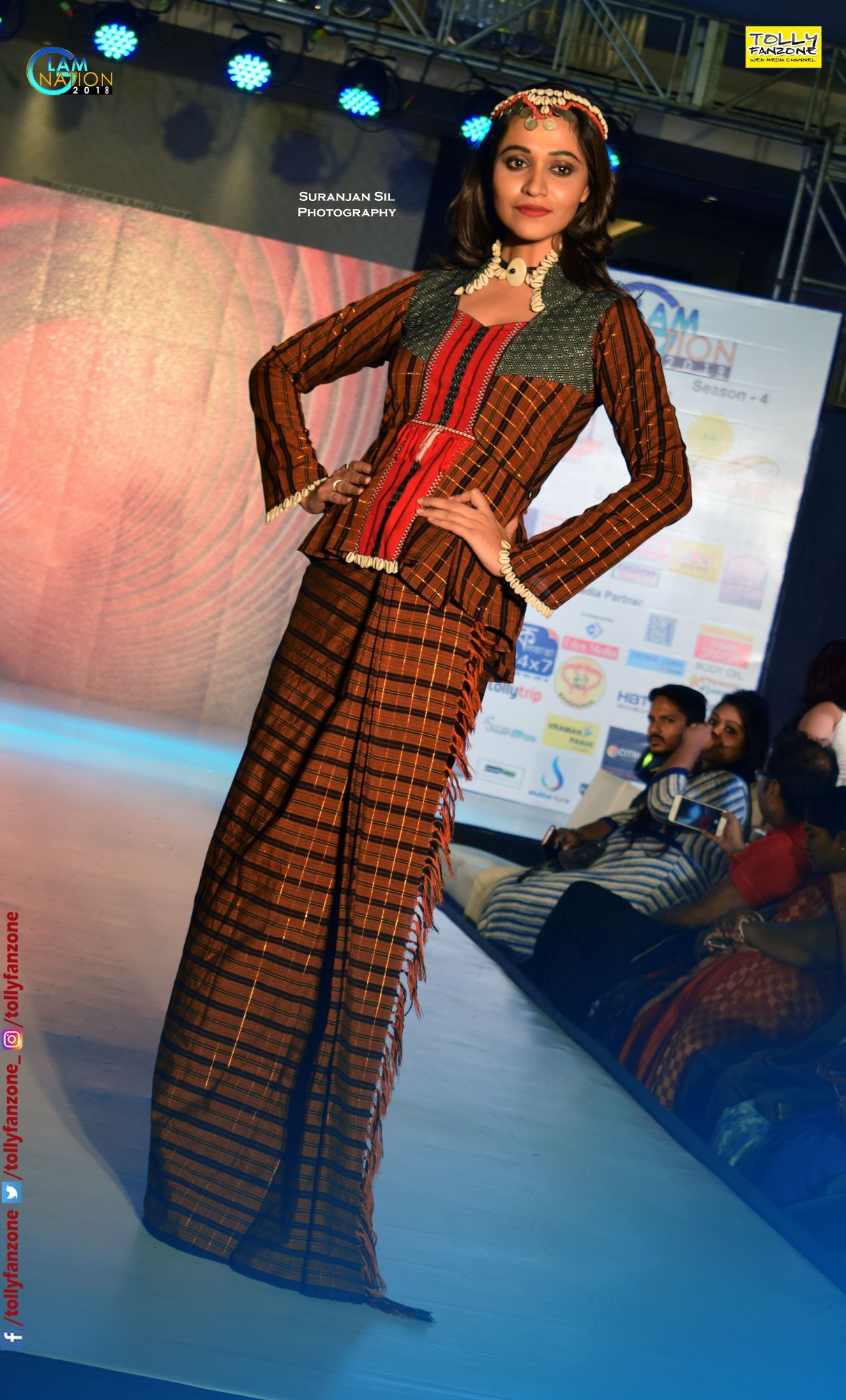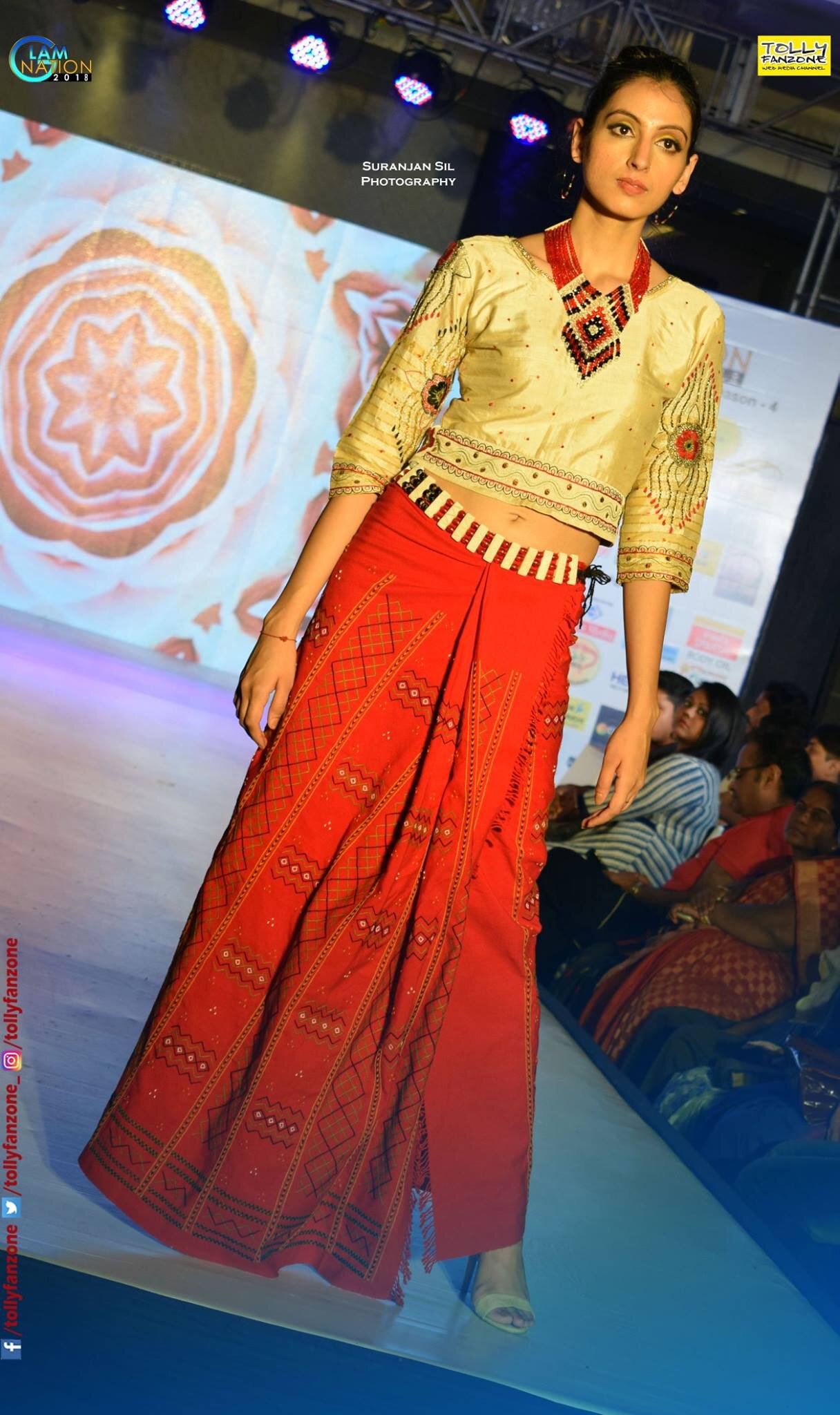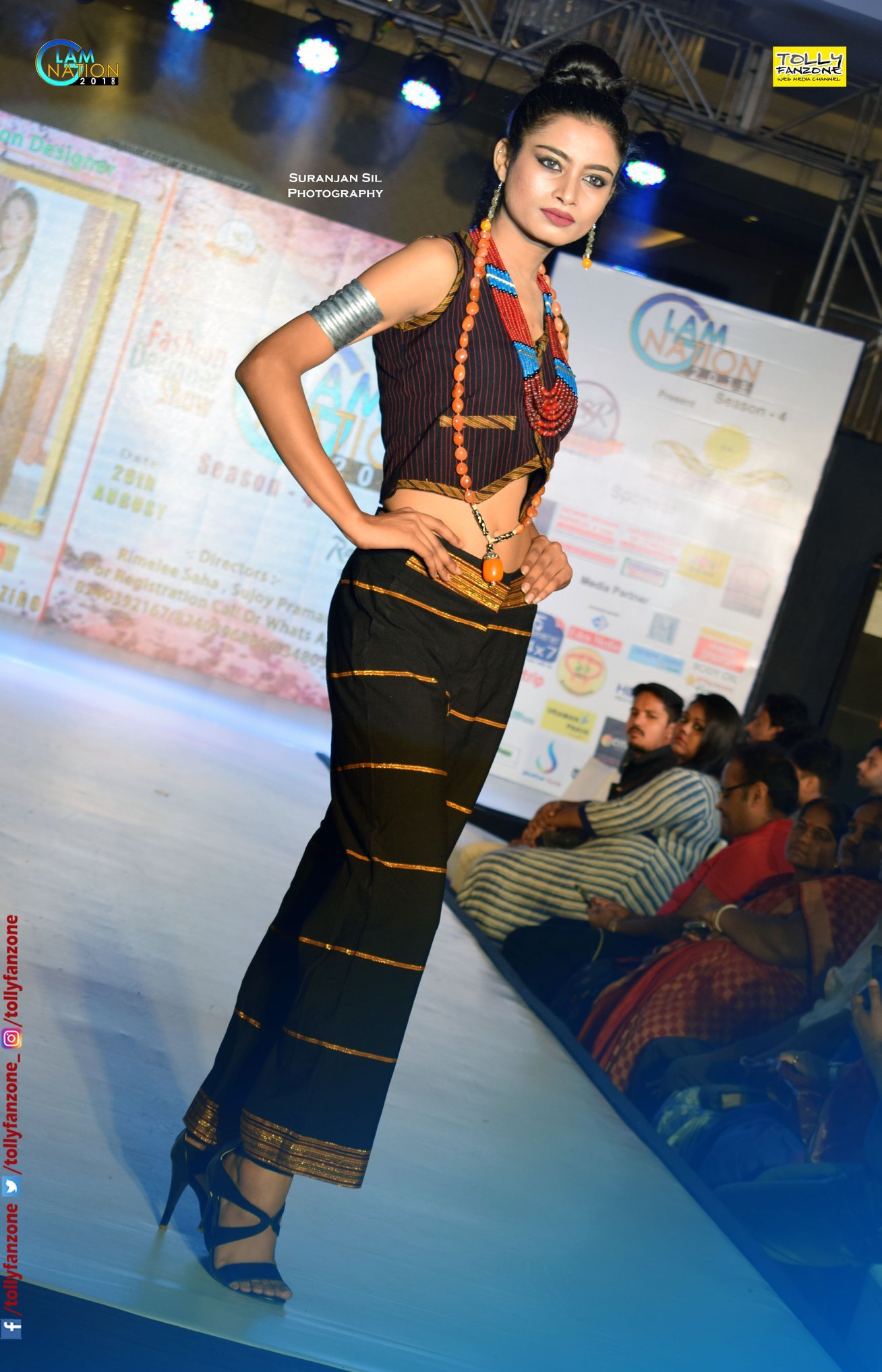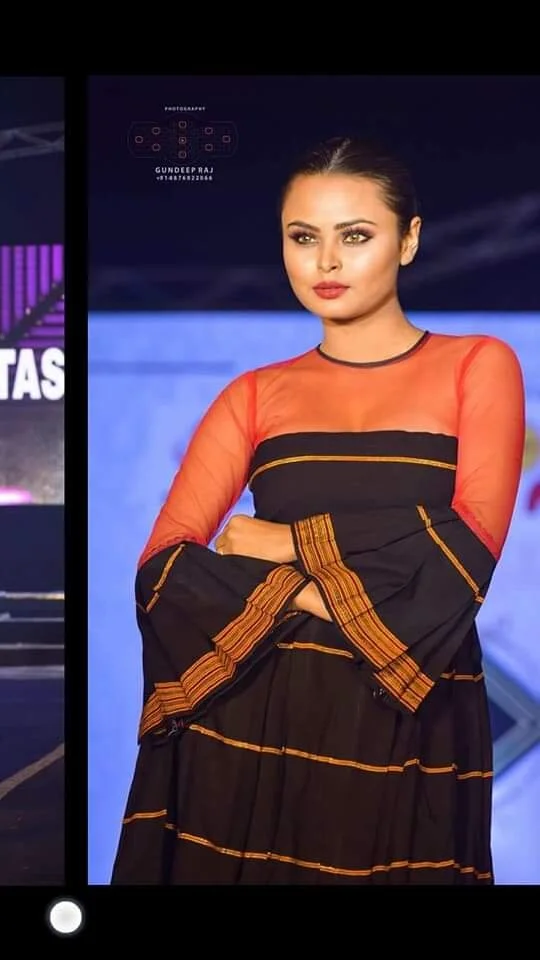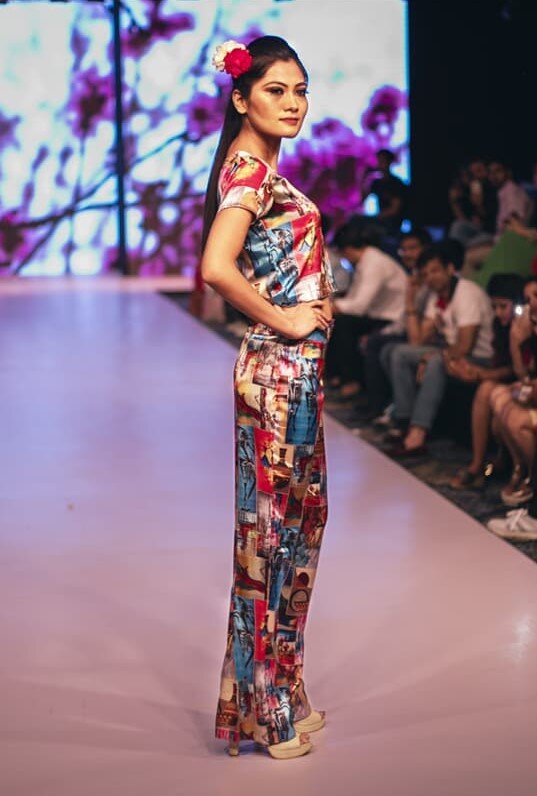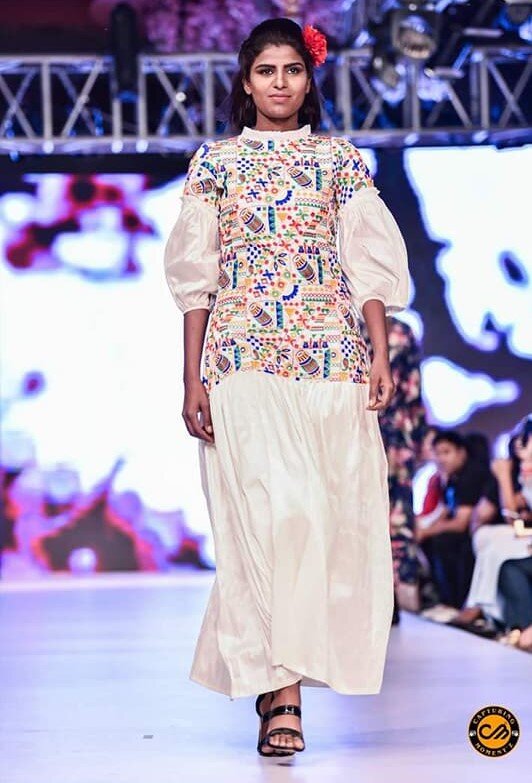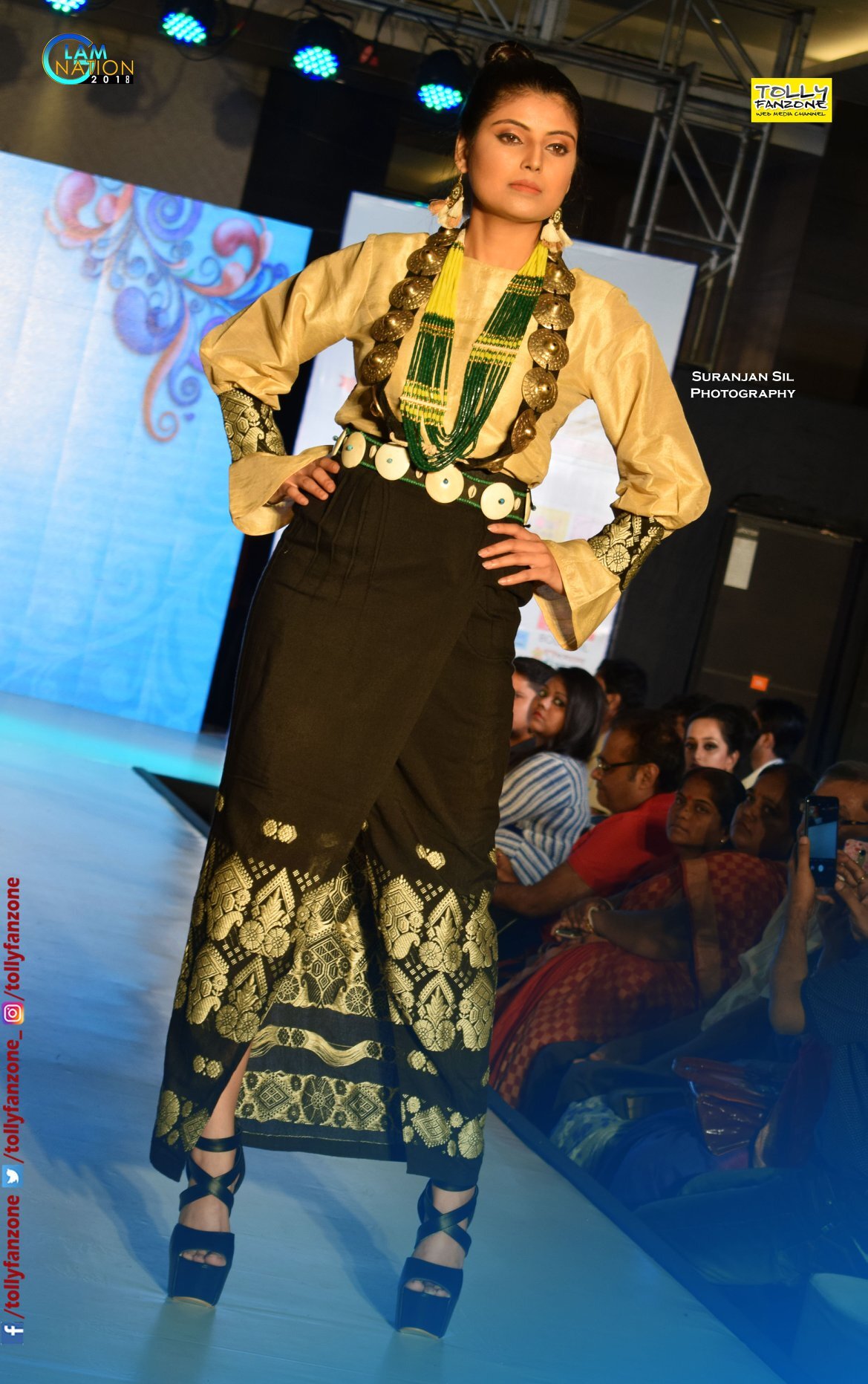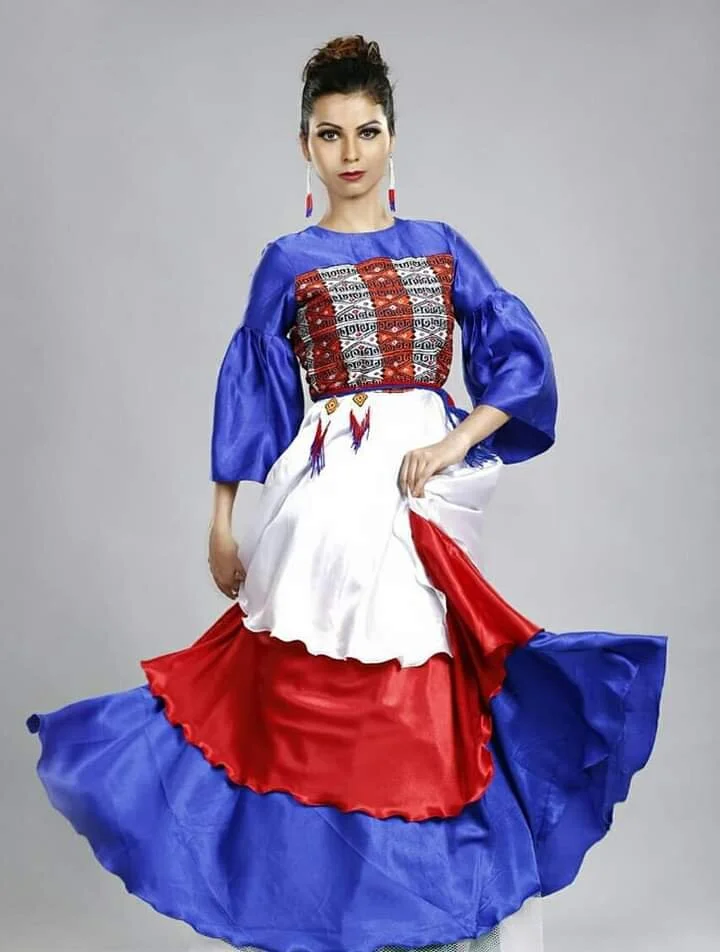Meet the Apatani fashion designer Tasso Lily Kago
Lily comes from a place where handicrafts can fire your imagination with stories and powerful symbols. Tasso Lily Kago’s home, the Ziro valley, is located in Arunachal Pradesh, a state in Northeast India comprised of 26 tribes and over 100 sub-tribes. Here, the art of weaving has been passed down by countless generations, where it has been cultivated by women every single day.
Let me introduce to you a very special fashion designer. Sitting behind her loom, Tasso reimagines clothes that can be created with the local textiles of her people, the Apatani. She is devoted to bringing new life to the traditional designs of the Apatani.
Lily’s focus goes beyond fashion. She is equally as inspired and engaged in social activism as she is with her art. More, she is even a beauty queen! Lily holds titles including: Miss Lune 1st Runner up in 2000 and Mrs Ziro 1st Runner up in 2004. These local, indigenous beauty pageants are the essence of cultural performances. Miss Lune was inspired by one of the most important festivals of Adis people, Solung which worships Mother Nature for her benevolence. A ritual dance called Ponung performed during this event has always been a test of girls’ patience, endurance, discipline and leadership skills, qualities which the Apatani favor in a ‘beauty queen’. Today, as Vice President of the International Human Rights Organization (IHRP), Lily empowers women and supports their self-development. She also vocally promotes environmental sustainability, spreading the importance of environmental preservation. The land Ziro, where she originates from, is in the tentative list of UNESCO World Heritage Sites as a unique cultural landscape where people have developed rich ecological knowledge of natural resources management. The Apatani carry valuable models for living in perfect harmony with nature that can benefit the entire world. Every aspect of Apatani life reflects this Earth-revenant approach. Even fashion.
The Apatani
Lily, as a member of the Apatani, employs the same values as her community in her work. She uses her voice to raise awareness about handloom textiles, which are far more sustainable and beneficial for society than mass produced textiles. One of her collections was presented during the North East India Fashion Week, dedicated to the weavers, handicrafts artisans, and designers, who work exclusively to promote handwoven textiles.
Although traditional designs tend to be worn less and less by younger generations, Lily deeply admires her rich heritage. She creates ethnic fusions that honor her Apatani’s heritage that still speak to contemporary tastes. Her work has created a new increase in the popularity of traditional designs among youths. Let’s take a closer look at her work.
The interview below is conducted as part of my exploration and research work on indigenous designs and clothing.
What is your definition of fashion?
Fashion is a transformation of simple materials into something eye catching but also comfortable.
What was the biggest lesson about designing you have ever received?
To remember that when people give feedback on your work, they are not criticizing your ability as a designer and they aren’t questioning the quality of the design itself. They are just giving helpful suggestions, so don’t take it to heart.
What and who inspires you as a designer?
We Apatani are a very colorful tribe. We have many different types of textiles, made in our traditional loin looms. Apatani textiles are often decorated with geometric designs, and they are mostly made with extra-weft techniques. When I was a child, I was amazed by the idea of clothing with uncommon stitches and designs. Our motifs and colorful stripes were used for the enrichment of Tanw Textiles such as Bilang Abi (gale), Ji Abi, Hete Abi, Pisa Linda, Supung Tarii, Jikhe Pulye, Jikatarii, Jilang Pulye, Pyamin Pulye, etc.
I’m also inspired by the approach of creating unique and innovative designs. When I started designing my first frock and skirt, I knew nothing about fashion. I just wanted to stand out from my friends and wear something special. This inner thirst and passion have led me to venture into fashion work and study fashion design. I did this after completing my first studies of sociology. I received a lot of support from my mother and husband who both encouraged me to follow my dreams.
If you could describe Apatani clothing in 3 words, what would they be?
Simple, colorful and geometric.
Why are traditional designs important for Apatani?
It is believed that Apatani people should be dressed and decorated perfectly on ceremonial occasions so that their prayers and offerings will be accepted by the gods. Thus, facial tattoos, ear plugs or attires of the Apatani are influenced by culture and religion. These traditional designs are important for us because they were made by our ancestors. They have been passing down from generation to generation and they have been preserved continuously to date. There are certain ceremonial dresses with our traditional designs like the Zillang, Zibo, Abyo, and Zikhe Tarii, that are so sacred that neither the layman nor the priest can wear them on a daily basis.
What is the meaning of Apatani designs?
For instance, straight lines represent simplicity and discipline.
Simplicity - we know how to use simple, contrasting colors to make a masterpiece of our designs.
Discipline - our complex embroideries indicate meticulous detailing, accuracy, and precision in our work. These two qualities are very important aspects of Apatani life.
Examples of Apatani attire:
Female:
Pisa Linda – a unique and exotic skirt woven or embroidered with a twill motif.
Supung Tarii – a sleeveless ceremonial white shirt with a richly decorated band on the back
Bilan Abi – a ceremonial red and white skirt with a blue striped bottom
Chinyu Abi – a usual Apatani woven skirt with black and white design
Niihu Abi – a common Apatani skirt with a stripe design called abi hete
Male:
Jikhe tarii - a ceremonial sleeveless jacket with an exotic black and white design
Jilan Pulye – a priestly shawl, which is the most expensive piece of ceremonial Apatani costume
Pyamin pulye - a traditional fringe shawl used by commoners during ceremonial festivals
Abyo – a priestly headscarf worn during the performance of rituals and incantations
Are there any myths about Apatani clothing?
The Apatani priests wear special shawls on ceremonial occasions such as the Myoko, Murung or Subu. These shawls are decorated with extraordinary designs. It is believed that this shawl has supernatural power. Moreover, the use of certain clothing is often associated with a family’s social position and achievements in the fields of war or hospitality.
How does traditional clothing shape the sense of community?
It defines us as a tribe. Fashion is important to society as it brings people together to celebrate and promote their own individuality. Thanks to our traditional attire we can easily recognize each other while we gather during social and ceremonial occasions. The designs characteristic for Apatani people are geometric patterns (like diamonds or zig zags), straight lines, stripe patterns and contrasting combinations of colors.
What can the fashion industry do to be more sustainable?
Mother Earth is being invariably hurt every day by the ignorant representatives of the fashion industry. The fashion industry is one of the most polluting industries in the entire world, so it is vital to make clothes production clean and green. Destructive fashion is no longer acceptable to consumers, who are becoming increasingly aware how important it is to create clothing with a minimal effect on the environment, and which are not harmful to our health. To be more sustainable, we need to adopt a frame of policies and strategies to stop polluting our planet. Luckily, more consumers, brands, and even retailers are adopting the five essential R's: Reduce, Repair, Recycle, Repurpose, and Reinvent. Brands are improving the overall customer experience by providing guidelines to ensure that their purchases last for a long time. Some brands are offering repair facilities for their clothes, or they redesign them. In recent years, brands have taken many initiatives to give old clothes an entirely new look. This is one of the ways to save on raw material and natural resources. Upcycling uses either pre-consumer or post-consumer waste to manufacture new products. This method reuses old clothes without going through the recycling process. I believe that these five trends are leading the fashion industry towards a sustainable and friendly future.
Paya Aro Pacho! Thank you so much Lily!

